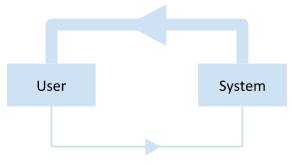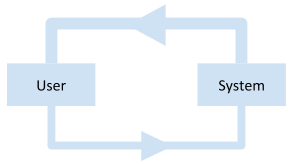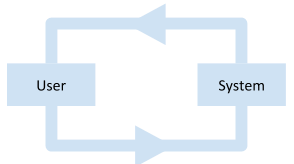Types of IS
Information collections
Info collections are a common type of IS. They’re usually Web sites. Examples are Wikipedia, and most corporate Web sites. Information flow is mostly one-way. Someone creates the system, and puts information on it. Someone else reads the information. There might be a Contact Us form, but that’s about it.

Info collection IS
You’ll be building one of these.
Conversational IS
In a conversational IS, most of the content is put on a Web site by a company, but there’s significant interaction from users. Comments, discussion forums, some purchase or signup options, things like that.

Conversational IS
CKEditor.com is an example. CKEditor is the editor you’ve been using. The Web site has tutorials and reference information for programmers. It also has active discussion forums. They add value to the site, because if one programmer is having trouble doing something with CK, there’s a good chance that another programmer had the same problem, and posted the solution to the forum.
CK comes with Drupal, but is actually a separate project. Drupal does a lot of that; it borrows existing open source components, rather than building new ones from scratch. The acroynm for that is PIE: proudly invented elsewhere.
Applications
Applications are two-way systems. Amazon.com is an example. The IS shows users product information, and users buy stuff. The information flowing in both directions is equally important. Most non-Web systems in companies are applications.

Application
Facebook and Twitter are applications. Almost all of the information comes from users. The application routes it to the right places.
Mashups
Some systems are mixes of these three. Later, you’ll be building an IS that is an info collection for some people, but an application for other people.
Your info collection
There are two things in this part of the course.
First, the student team will build an info collection for a nonprofit. You’ll see what they do, and how they do it.
Second, you’ll make a site yourself.
